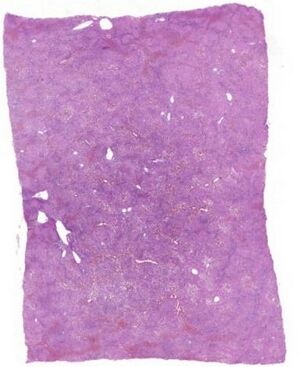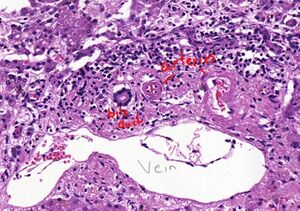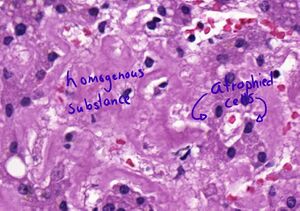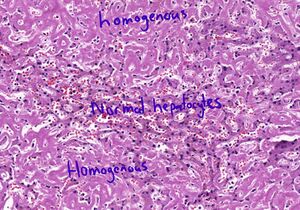12. Amyloidosis of the liver
Staining: HE
Organ: Liver
Description:
We can identify the organ by looking for portal triads. In some parts of the slide we can see normal hepatocytes, however in some parts we can see an eosinophilic, homogenous, hyaline (glass-like) substance. Some hepatocytes have small cytoplasm, making them look atrophied.
Diagnosis: Amyloidosis of the liver
Theory:
The homogenous substance is comprised of amyloids. The atrophied hepatocytes have atrophied because they’ve been compressed by the amyloid accumulation.




